Excel How To Shift Cells To The Left If Empty
Excel is a powerful spreadsheet software that offers numerous features and functions to manipulate and organize data. One common task users often encounter is shifting cells to the left when they are empty. This can be particularly useful when consolidating data or reorganizing information within a worksheet. In this article, we will explore various methods to shift cells to the left if they are empty in Excel, including built-in functions, formulas, and VBA code.
Introduction:
When working with large datasets in Excel, it is common to encounter empty cells that need to be rearranged to maintain the integrity and organization of the data. Manually shifting cells one by one can be time-consuming, especially if you are dealing with thousands of rows or columns. Fortunately, Excel provides several methods to automate this process and efficiently shift cells to the left if they are empty.
Understanding the concept of shifting cells in Excel:
Before we delve into the different techniques and methods available, it is important to understand the concept of shifting cells in Excel. Shifting cells refers to moving their content horizontally to the left or vertically upwards while leaving no empty spaces in between. This is usually done to eliminate gaps or consolidate data in a structured manner.
Identifying empty cells within a range:
The first step in shifting cells to the left if they are empty is to identify the target range within the Excel worksheet. This range can be a specific column, row, or even a selected range of cells. By selecting the desired range, we can examine the cells and determine which ones are empty. Empty cells are those that do not contain any value or formula.
Implementing the SHIFTLEFT function:
One of the simplest methods to shift cells to the left if they are empty is by utilizing the SHIFTLEFT function. This function is not a built-in Excel function but can be implemented as a user-defined function (UDF) using VBA code. The SHIFTLEFT function takes a range as input and shifts all the cells to the left, eliminating any empty spaces.
Using VBA code to shift cells to the left:
If you are comfortable with VBA (Visual Basic for Applications), you can write a custom macro to automate the process of shifting cells to the left if they are empty. By writing a VBA code, you can create a custom button or assign a shortcut key to execute the macro whenever required.
Handling error cases when shifting cells:
When shifting cells to the left, it is crucial to handle error cases to ensure the integrity of the data. Error cases may include situations where there are no empty cells or when the selected range exceeds the limits of the worksheet. By incorporating error handling mechanisms, you can prevent unexpected results and maintain the efficiency of your Excel workbook.
Applying the SHIFTLEFT formula across multiple columns or rows:
In some scenarios, you might need to shift cells to the left across multiple columns or rows. Excel provides versatile functions like OFFSET and INDEX, which can be combined with the SHIFTLEFT formula to achieve this. By using these functions, you can dynamically adjust the range and perform the desired shifting operation.
Considering conditional criteria for shifting cells to the left:
Sometimes, you may want to shift cells to the left only if specific conditions are met. Excel allows you to apply conditional criteria using functions like IF and COUNTIF. By incorporating these criteria into your formulas or VBA code, you can selectively shift cells based on certain conditions or values.
Utilizing Excel’s built-in functions for shifting empty cells leftwards:
Apart from custom formulas and VBA code, Excel offers a few built-in functions that can help shift empty cells to the left. Functions like IF, ISBLANK, and OFFSET can be combined to achieve the desired results without the need for extensive coding. These functions provide a more user-friendly approach for users who may not be familiar with VBA.
Advanced techniques for shifting cells to the left in Excel:
For advanced users, there are additional techniques available to shift cells to the left in Excel. These techniques involve complex formulas, array formulas, or even Power Query. While these methods may require a deeper understanding of Excel’s functionalities, they offer more flexibility and control over the shifting process.
FAQs:
Q: What is the Excel shift cells left if blank formula?
A: The Excel shift cells left if blank formula is a combination of functions like IF, ISBLANK, and OFFSET. It checks if a cell is empty and, if true, shifts the cell to the left by adjusting the range using OFFSET function.
Q: How do I shift cells up if blank in Excel?
A: To shift cells up if they are blank in Excel, you can utilize similar techniques as shifting cells to the left. By modifying the formulas or VBA code, you can change the direction to shift the cells upward.
Q: How can I automatically shift cells up in Excel?
A: To automatically shift cells up in Excel, you can create a VBA macro that identifies empty cells and moves the content upward by adjusting the range and using the OFFSET or INDEX functions.
Q: How do I delete empty cells and shift left in Excel?
A: Deleting empty cells and shifting left in Excel can be achieved with VBA code or other built-in functions. By identifying empty cells using ISBLANK function, you can delete them and shift the remaining cells to the left.
Q: Is there a shortcut to shift cells left in Excel?
A: Yes, there is a shortcut to shift cells left in Excel. Select the range of cells you want to shift and press Ctrl + – (minus key), followed by choosing “Shift cells left” in the dialog box that appears.
Q: How do I automatically shift cells down in Excel?
A: To automatically shift cells down in Excel, you can use VBA code or macros. These codes can identify empty cells and shift the content downward by adjusting the range and using the OFFSET or INDEX functions.
Q: Can I delete and shift cells up in Excel using a keyboard shortcut?
A: Yes, you can delete and shift cells up in Excel using a keyboard shortcut. Select the cells you want to delete, press Ctrl + – (minus key), and choose “Shift cells up” in the dialog box.
Conclusion:
Shifting cells to the left if they are empty is a common task in Excel when working with large datasets or rearranging information. By utilizing built-in functions, formulas, or VBA code, users can automate this process and save valuable time. In this article, we explored various techniques and methods to achieve this, including the SHIFTLEFT function, VBA code, and conditional criteria. By incorporating these techniques into your workflow, you can efficiently manipulate and organize your data in Excel, ultimately improving productivity and accuracy.
Quickly Selecting And Removing Or Shifting Excel Data Up Down Right Left2
Keywords searched by users: excel how to shift cells to the left if empty excel shift cells left if blank formula, shift cells up if blank in excel, Shift cells left, automatically shift cells up in excel, excel vba delete empty cells and shift left, shift cells left excel, how to automatically shift cells down in excel, excel delete and shift cells up shortcut
Categories: Top 13 Excel How To Shift Cells To The Left If Empty
See more here: nhanvietluanvan.com
Excel Shift Cells Left If Blank Formula
Microsoft Excel is a powerful tool that offers a wide range of features and functions to help users organize, analyze, and manipulate data. Among its many capabilities, Excel allows users to shift cells left if a specific condition is met, such as if a cell is blank. This handy formula can save users time and effort by automating the process of rearranging data within a worksheet. In this article, we will delve into the details of this formula, explore its various applications, and address some frequently asked questions.
Understanding the Shift Cells Left If Blank Formula
The shift cells left if blank formula in Excel is a conditional formula that evaluates whether a cell is empty or not, and if it is, it shifts the entire row to the left. This formula is especially useful when dealing with large data sets, as it allows users to quickly reposition data without manually dragging and dropping cells.
To use this formula, you can follow these simple steps:
Step 1: Open Microsoft Excel and navigate to the worksheet containing the data you wish to manipulate.
Step 2: Identify the column where the blank cells are located that you want to shift.
Step 3: In an adjacent empty column, enter the following formula: =IF(ISBLANK(A1), IF(ISBLANK(A2), IF(ISBLANK(A3), …, …, LAST_CELL, “”), “”), “”).
Here, A1 represents the first cell in the column you wish to evaluate, and LAST_CELL represents the last cell in that column.
Step 4: Press Enter, and Excel will evaluate each cell in the column based on the provided formula.
Step 5: To finalize the process, copy the formula in the adjacent column and paste it over the original column. Select the cells in the adjacent column, press Ctrl+C to copy, and then right-click on the original column and select Paste Special > Values to replace the original data.
Applications and Benefits
The shift cells left if blank formula can be used in various scenarios to streamline data manipulation tasks.
1. Data Cleaning and Organization:
Often, when working with large datasets, you might encounter blank cells that disrupt the desired structure. This formula can help rearrange the data so that it no longer contains empty cells. For example, if you have a dataset where some rows have a misplaced cell to the right, you can use this formula to shift those rows left, aligning the data correctly.
2. Data Analysis:
The shift cells left if blank formula can also be used to prepare data for analysis. By eliminating blank cells, you can ensure that all relevant data is considered when performing calculations or creating charts and graphs. This formula is particularly useful when working with pivot tables, which require a consistent structure with no empty cells.
3. Automation:
Employing the shift cells left if blank formula reduces manual labor and increases efficiency. Instead of individually dragging and dropping cells to realign the data, Excel does it for you automatically. By using this formula, you can save time and effort, especially when working with large datasets or performing frequent updates.
Frequently Asked Questions
Q: Can the formula shift cells left if any condition is met other than being blank?
A: Yes, the formula can be modified to evaluate any condition using the IF function. For example, you can shift cells left if they contain specific texts, numbers, or formulas.
Q: What happens if there are merged cells or hidden rows in the evaluated column?
A: Merged cells and hidden rows can disrupt the evaluation process. It is advisable to unmerge the merged cells and unhide any hidden rows within the column before applying the formula.
Q: How can I apply the formula to multiple columns simultaneously?
A: To apply the formula to multiple columns, you can adjust the cell references within the formula accordingly. For example, if the blank cells are in Column A, you can use the formula in Column B, and then copy it across other adjacent columns.
In conclusion, the shift cells left if blank formula in Excel is a valuable tool for manipulating and organizing data. By intelligently evaluating and rearranging cells based on specified conditions, this formula enhances productivity and simplifies data analysis. Whether you are cleaning up datasets, preparing data for analysis, or automating data manipulation tasks, this formula can be an essential weapon in your Excel arsenal.
Shift Cells Up If Blank In Excel
Introduction:
Excel, the popular spreadsheet software, offers various powerful functions to manipulate data efficiently. One commonly encountered task is shifting cells up if they are blank, primarily to maintain data integrity or improve visual presentation. In this article, we will explore step-by-step instructions on how to perform this action in Excel, as well as answer some frequently asked questions.
How to Shift Cells Up if Blank in Excel:
Step 1: Select the range:
First, you need to select the range of cells where you want to apply the shift. Alternatively, you can select the entire worksheet if needed. To select a range, click and drag the mouse over the desired cells.
Step 2: Open the Find and Replace dialog box:
Next, open the “Find and Replace” dialog box. There are multiple ways to do this, but the simplest way is to use the keyboard shortcut “Ctrl + H” or navigate to the “Home” tab, click on “Find & Select”, and choose “Replace” from the drop-down menu.
Step 3: Enter the search parameters:
In the “Find and Replace” dialog box, leave the “Find what” field empty, and enter an easily identifiable value, such as a special character or a unique word, in the “Replace with” field. For instance, you can use a dash (“-“) to replace the blank cells.
Step 4: Adjust the search settings:
To ensure Excel only replaces the blank cells, click on the “Options” button in the dialog box. Check the “Look in” field and ensure it is set to “Values.” Select the “Match entire cell contents” option to avoid undesired replacements.
Step 5: Execute the replacement:
Click on the “Replace All” button to perform the replacement process. Excel will automatically shift the non-blank cells up to fill the originally blank cells.
Step 6: Review the outcome:
After the replacement is completed, carefully review the updated data to ensure accuracy. Check for any unexpected shifts that may have occurred due to complex formulas or dependencies between cells.
FAQs:
Q1: Can I shift cells up if there are formulas present?
A1: Yes, Excel treats cells with formulas as non-blank cells. Therefore, any cell with a formula will not be shifted up, ensuring the formula’s integrity.
Q2: Is it possible to shift cells up within a specific range only?
A2: Absolutely. Prior to Step 5, select the specific range where you want to make the shift. Excel will limit the replacement process to the chosen range only.
Q3: Can I undo the shift if I accidentally replace the wrong cells?
A3: Unfortunately, the replacement process in Excel cannot be undone directly. However, to avoid potential mistakes, it is advised to create a backup or save a copy of the worksheet before executing the shift.
Q4: Will shifting cells affect other data in the worksheet?
A4: Shifting cells up will change the positions of cells in the same column, potentially impacting any dependent formulas or references. Therefore, it is essential to review and adjust any formulas or references that may have been affected.
Q5: Is there an alternative method to shift cells up if blank?
A5: Yes, an alternative approach is to use VBA (Visual Basic for Applications) programming within Excel. It provides a more dynamic and flexible solution, allowing users to define specific rules and conditions for shifting cells based on various criteria.
Conclusion:
Shifting cells up if blank in Excel is an important task that helps maintain data integrity and improve data presentation. By following the steps outlined above, you can easily shift cells up in Excel while maintaining safety precautions to avoid any unintended consequences. Remember to review the shifted data carefully and adjust any dependent formulas accordingly. With these insights and instructions, users can confidently manage their data in Excel effectively.
Shift Cells Left
In the world of spreadsheet applications, such as Microsoft Excel or Google Sheets, efficient management of data is crucial. One common operation is to shift cells left, often used to rearrange and reorganize data within a worksheet. This article will delve into the concept of shifting cells left, providing a comprehensive understanding of its uses, methods, and best practices.
Understanding Shift Cells Left
Shifting cells left refers to the action of moving the content of selected cells to the left, replacing the cells in their new positions. This allows for the reordering of data within a row or column, facilitating better organization and analysis.
Shift Cells Left Methods
1. Cut and Paste: One way to shift cells left is to utilize the cut and paste operation. Select the desired cells, right-click, and choose “Cut” or press Ctrl+X. Next, select the destination range to which the cells will be shifted and right-click, followed by the “Insert Cut Cells” option or pressing Ctrl+Shift+V. The content of the cells will be moved leftwards, effectively shifting the cells.
2. Drag and Drop: Another method to shift cells left is by using drag and drop. Select the cells you wish to shift, click and hold on the edge of the selected range, and drag it to the desired location. Release the mouse button, and the content will be shifted left. This method is particularly useful for small shifts within a worksheet.
3. Fill: The fill operation can be leveraged to shift cells left as well. Start by selecting the desired range of cells to be shifted. Hover your cursor over the edge of the selection until it changes to a four-sided arrow, then click and drag the range to its new position. When you release the mouse button, a small pop-up will appear, offering several options—choose “Shift cells left.” This method is convenient for shifting a large range of cells or rows.
Benefits and Use Cases of Shift Cells Left
1. Data Reorganization: Shifting cells left allows for the reorganization of data within a row or column, making it easier to comprehend and analyze. For example, suppose you have data in columns A, B, C, and D, but realize you need to swap columns B and C. By shifting cells left, you can quickly bring column C in between A and B, reflecting the new order.
2. Data Insertion: When inserting new data or columns, shifting cells left enables seamless integration. By employing the cut and paste or drag and drop methods, one can easily make space for the new information or columns while maintaining the overall integrity of the spreadsheet.
3. Visualization Enhancement: Utilizing shift cells left can improve the visual representation of data. For instance, in a table with multiple rows and columns, shifting cells left can help align related data together, simplifying the interpretation and enhancing the overall aesthetics of a worksheet.
FAQs
Q: Can I shift cells left within multiple worksheets simultaneously?
A: Yes, both Microsoft Excel and Google Sheets provide the capability to select and shift cells left across multiple worksheets. Ensure that the desired worksheets are selected before performing the shift operation.
Q: Will shifting cells left affect formulas?
A: Shifting cells left can affect formulas, especially if they reference the cells being shifted. It is essential to carefully review and update any affected formulas after performing the shift operation.
Q: Can I undo the shift cells left operation?
A: Yes, most spreadsheet applications offer an undo function that allows you to reverse the shift cells left operation. Simply press Ctrl+Z or navigate to the “Undo” option to revert the changes.
Q: Is there a limit to the number of cells that can be shifted left?
A: The limit to the number of cells that can be shifted left varies depending on the spreadsheet application and the available memory on your device. However, for practical purposes, shifting a large number of cells simultaneously might become unwieldy, so it is advisable to divide data into manageable chunks if necessary.
Q: Are there any precautions while shifting cells left?
A: When shifting cells left, be cautious not to overwrite any important data or formulas accidentally. Always double-check and save a backup of your spreadsheet before performing shift operations, especially when working with large or complex data sets.
In conclusion, understanding how to shift cells left in spreadsheet applications is essential for efficient data management. By utilizing methods like cut and paste, drag and drop, or fill, users can easily reorganize and rearrange their data. Shifting cells left offers benefits such as data reorganization, insertion, and visualization enhancement. However, attention must be paid to formula references and potential data loss. With these considerations in mind, mastering shift cells left can greatly contribute to an organized and visually appealing spreadsheet.
Images related to the topic excel how to shift cells to the left if empty
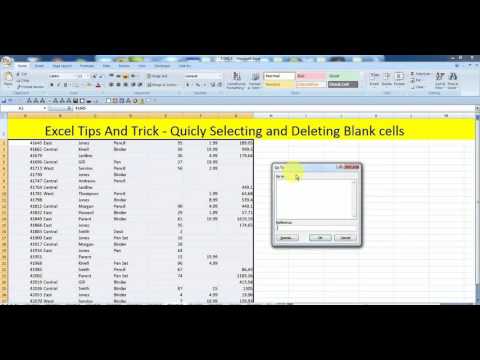
Found 25 images related to excel how to shift cells to the left if empty theme
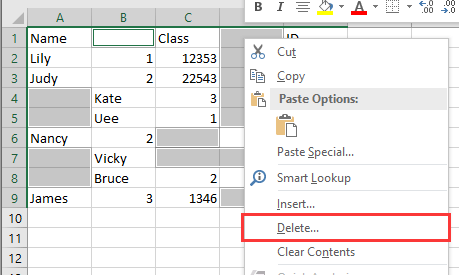
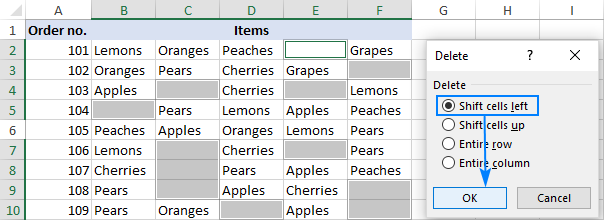

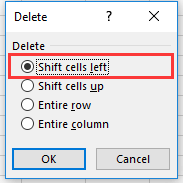
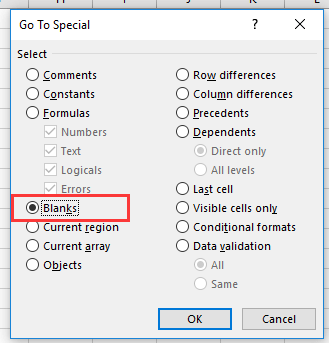
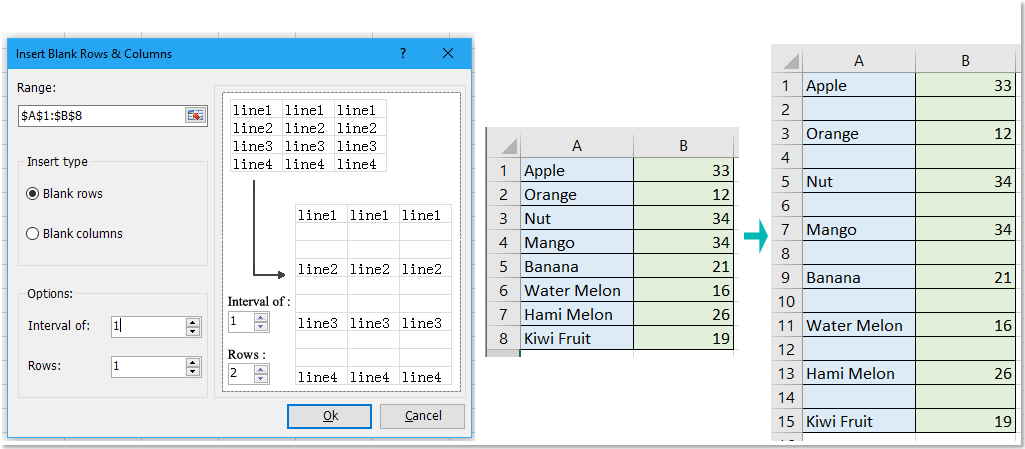

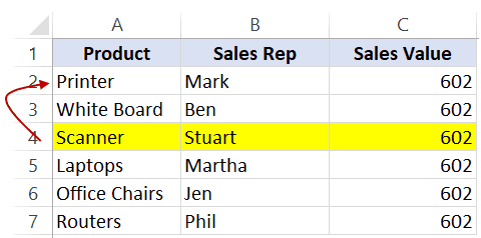
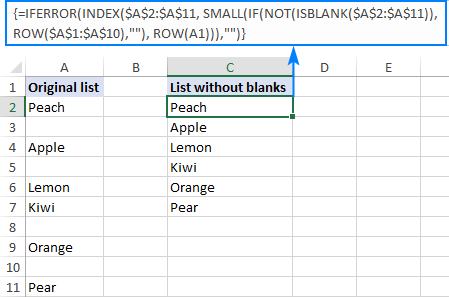


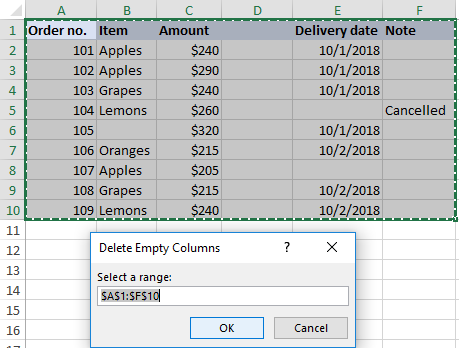
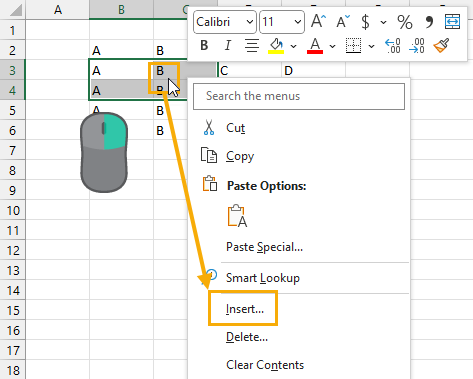
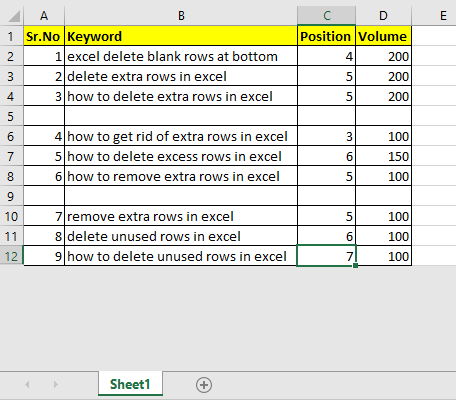

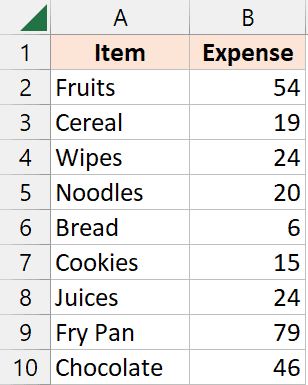


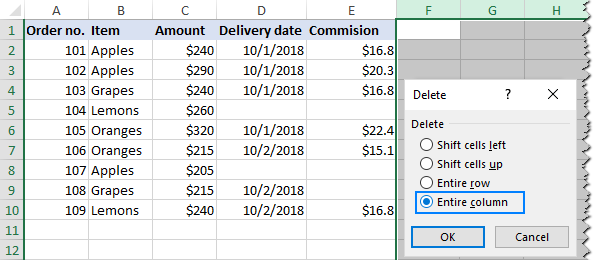
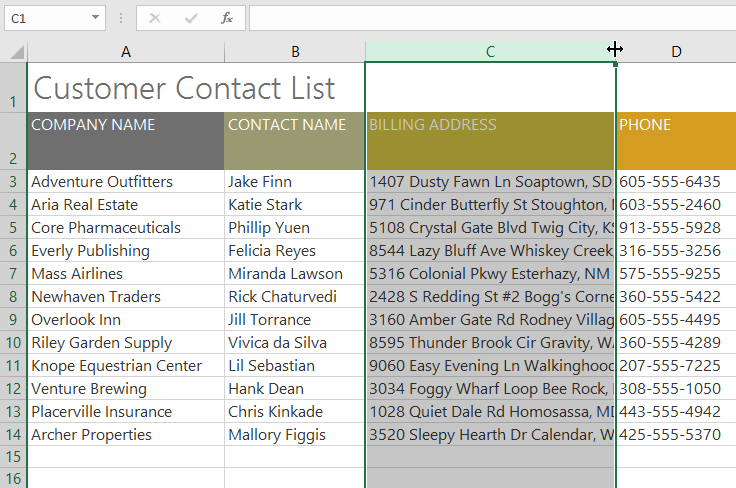
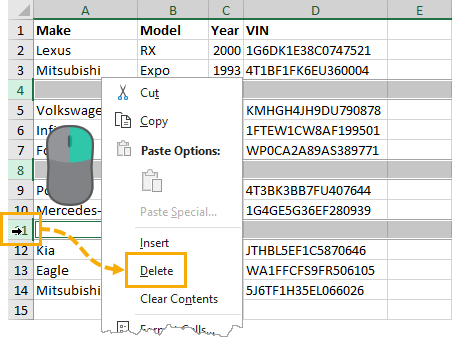


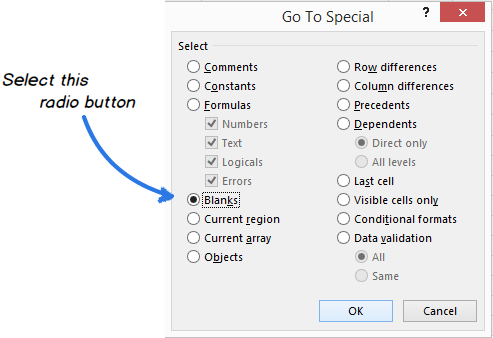


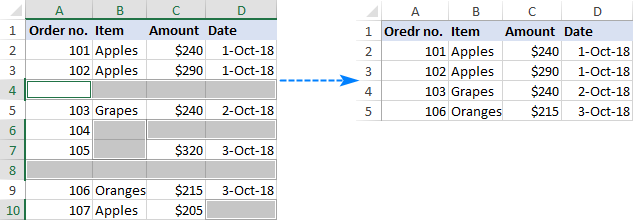


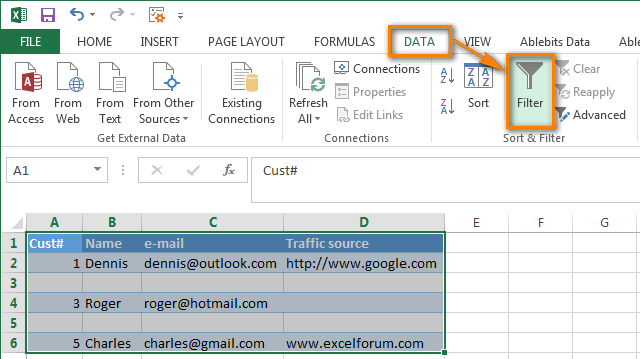

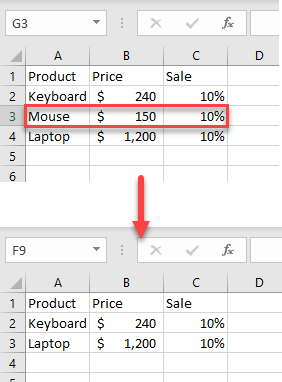
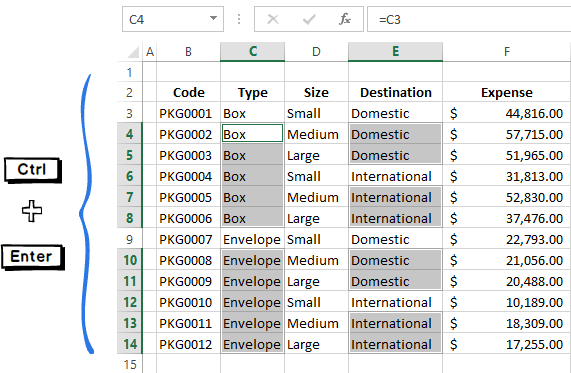

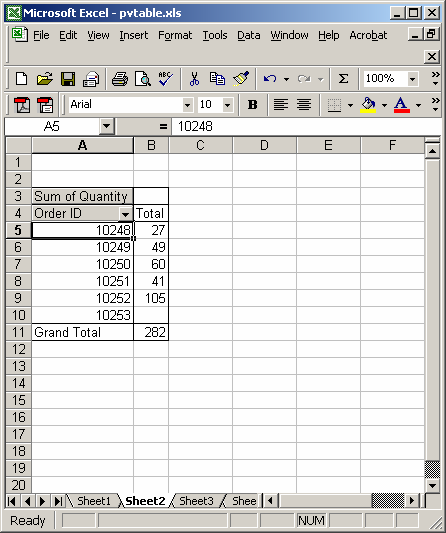

![3 Fixes] Excel Cannot Shift Nonblank Cells Off The Worksheet Error 3 Fixes] Excel Cannot Shift Nonblank Cells Off The Worksheet Error](https://www.repairmsexcel.com/blog/wp-content/uploads/2019/02/Image-1-Error-Message.png)
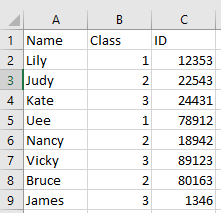

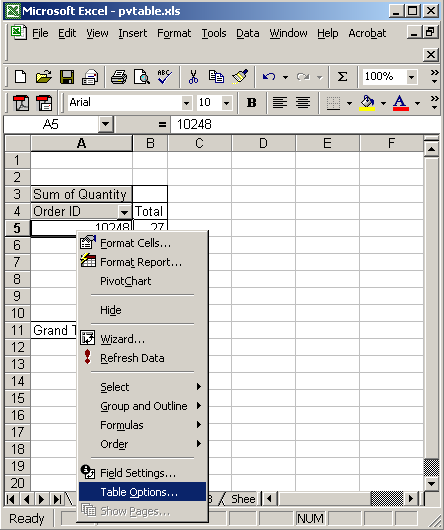
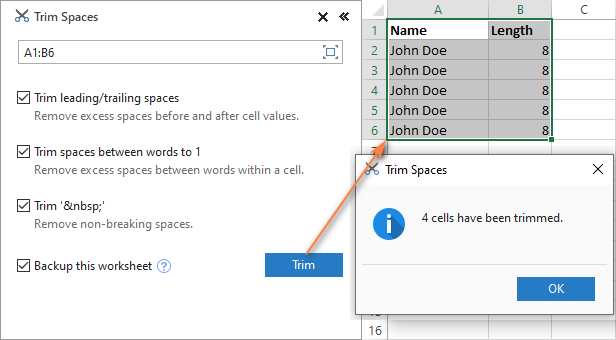
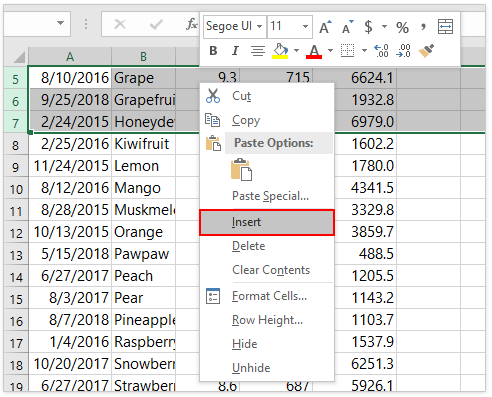

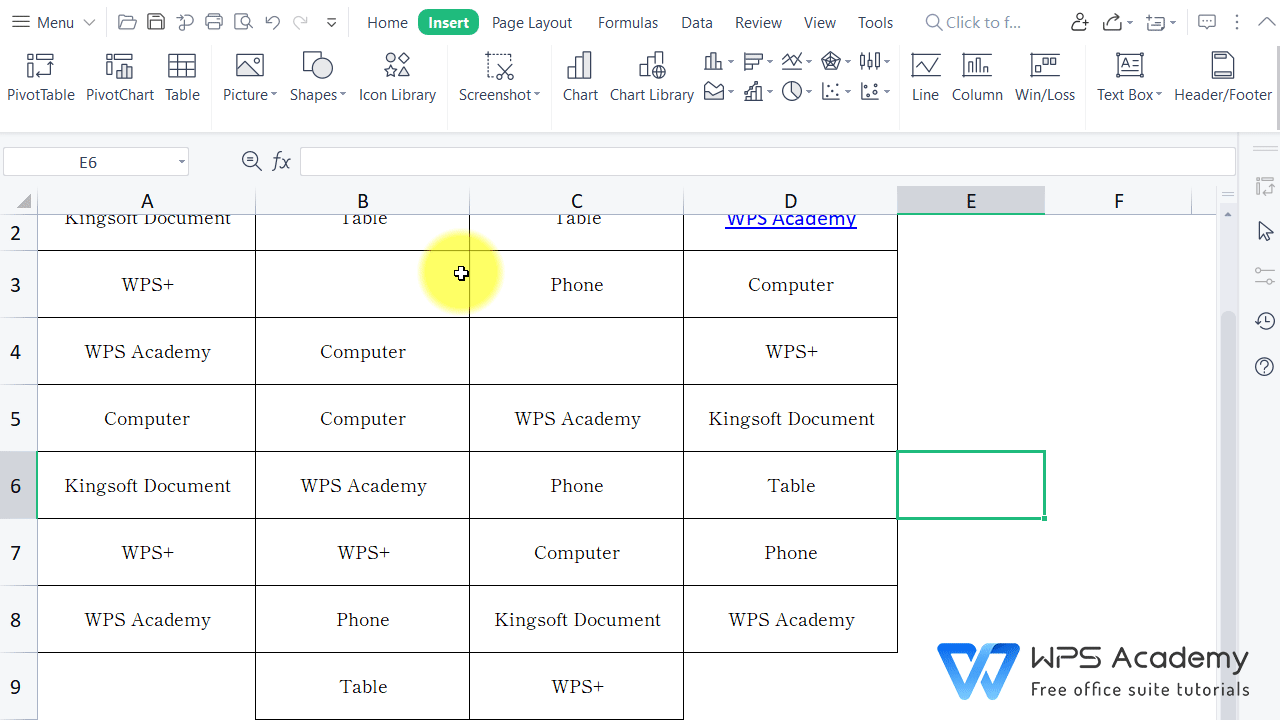
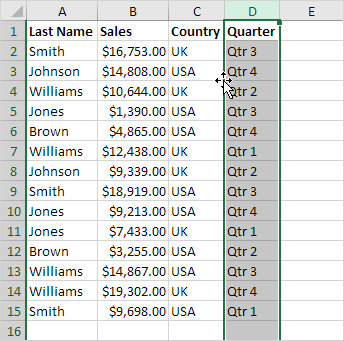

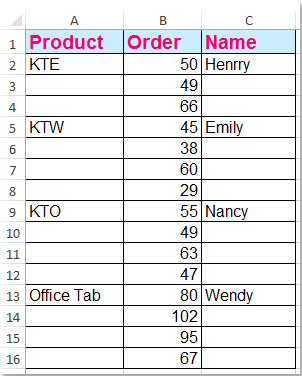

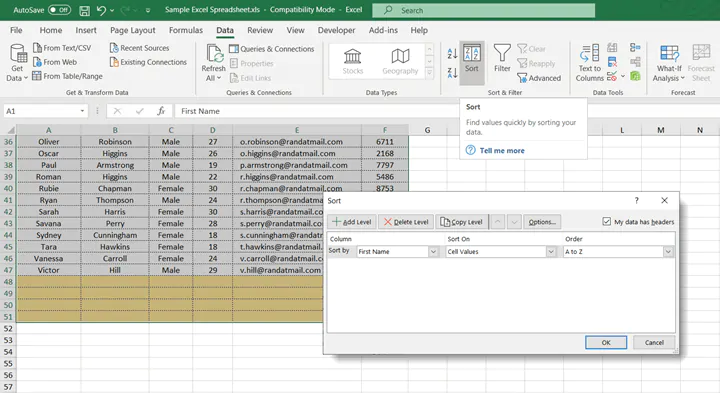

Article link: excel how to shift cells to the left if empty.
Learn more about the topic excel how to shift cells to the left if empty.
- How to remove blank cells in Excel – Ablebits
- Delete random blank Excel cells and shift remaining cells left …
- How to delete blank cells and move data left in Excel?
- Shift cells up if blank in Excel • AuditExcel.co.za
- How to Delete and Shift Cells Left in Excel & Google Sheets
- If Blank Cell Shift Cells Up – excel – Stack Overflow
See more: https://nhanvietluanvan.com/luat-hoc/